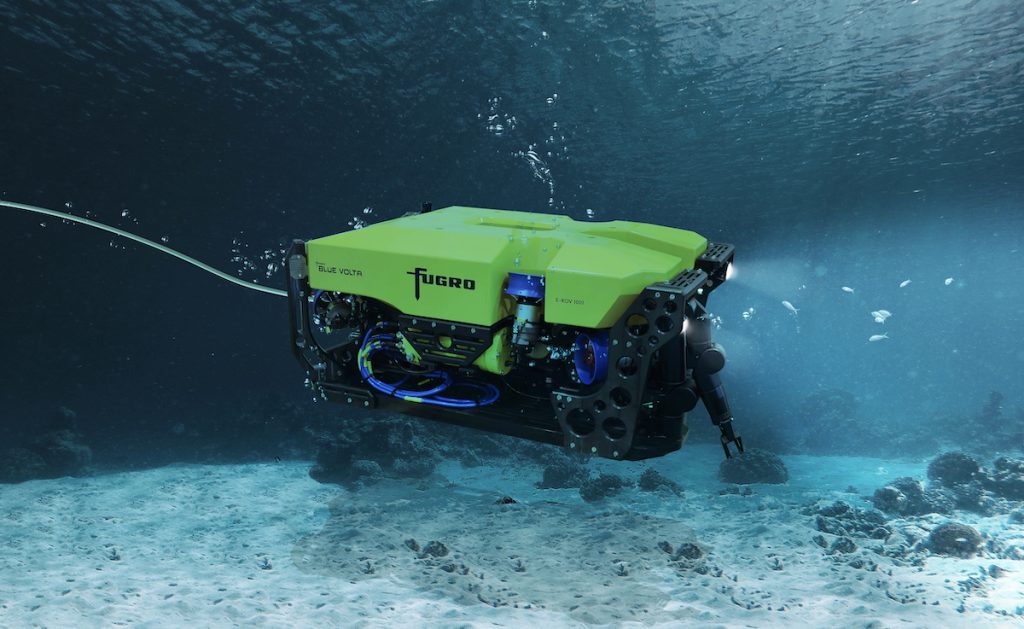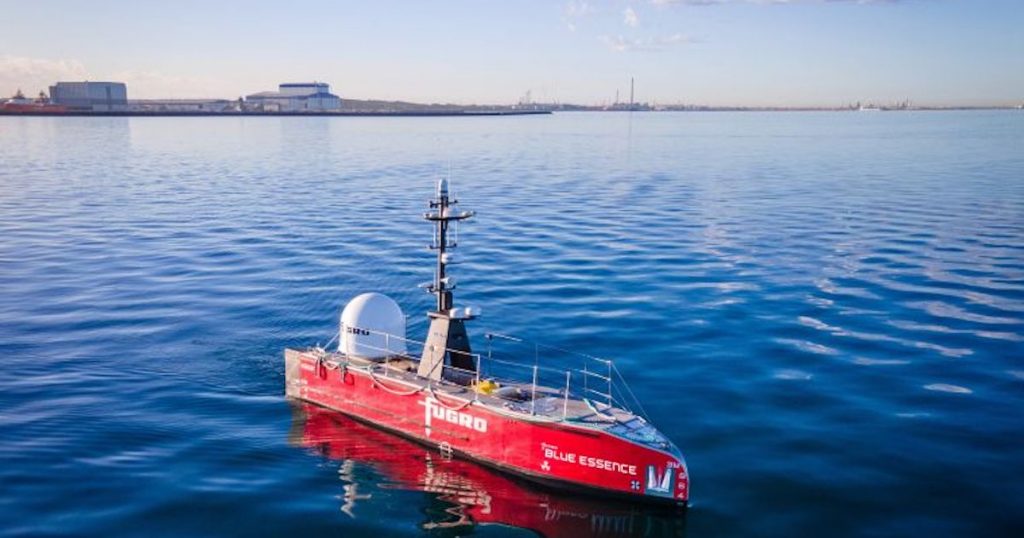Row, row, robot boat
Unpredictable, deep, and teeming with murderous creatures; the sea is a cruel mistress.
Entire genres of film and literature are dedicated to tales of the ocean’s mistreatment of interlopers.
On the North West Shelf, hugging the upper coastlines of Western Australia, critical oil and gas platforms, infrastructure, and subsea systems deep below the waterline require constant inspection, maintenance, and repair.
With crews of more than 50 professionals boarding vessels to take on these jobs, it is a costly, emissions and resource-intensive exercise that places teams of workers at the whim of the ocean and at risk of contracting COVID.
Now, a remote-controlled ‘Blue Essence’ vessel, paired with an electric underwater robot named Blue Volta, are changing the game.

The Fugro Blue Volta (Image from Fugro.com)

The Fugro Blue Essence Maali (Image from Fugro.com)
Never seen before anywhere in the world, the Uncrewed Surface Vessel (USV), named the Fugro Maali, is capable of withstanding 10 days at sea at up to 27 knots of wind (over 50km/h).
The USV took the name Maali from the Noongar term for ‘black swan’, which is both the state bird and emblem of Western Australia, where the project is based. Operated from an onshore remote operations centre (ROC), the robotic pair are proving a revelation.
The Maali and eROV teams completed their first mission in May 2021. Inspecting North West Shelf gas lines for safety, the pair navigated 1300 nautical miles, including Dampier Port, one of the busiest ports in Australia, without incident.
Compared to a traditional vessel, it’s a case of Honey, I Shrunk the Boat. Emissions were reduced by a staggering 97%.
97%.
In addition, it resulted in a 100% reduction in personnel from hazardous situations – no helicopters or planes – delivering lower costs and higher efficiency.
Since May, the Maali has completed two more inspection campaigns traversing deeper waters, as the systems are developed constantly to take on more complex, higher risk tasks.
For example, the eROV has been fitted with a high-pressure water jetter to inspect subsea assets that have been gunked up with sea detritus. The eROV has also been deployed to deliver millions of ultra-high-definition images, from 150 metres under water.
The culmination of years of work between maintenance contractor Fugro and Woodside, the vessel has only scratched the surface of what is possible in remote operations.
This local innovation has surely taken us a significant step closer to a future in which the only time we need to brave the deep blue, is for recreation. Preferably on summer holiday.
Explore
with Natural Gas Subscribe


